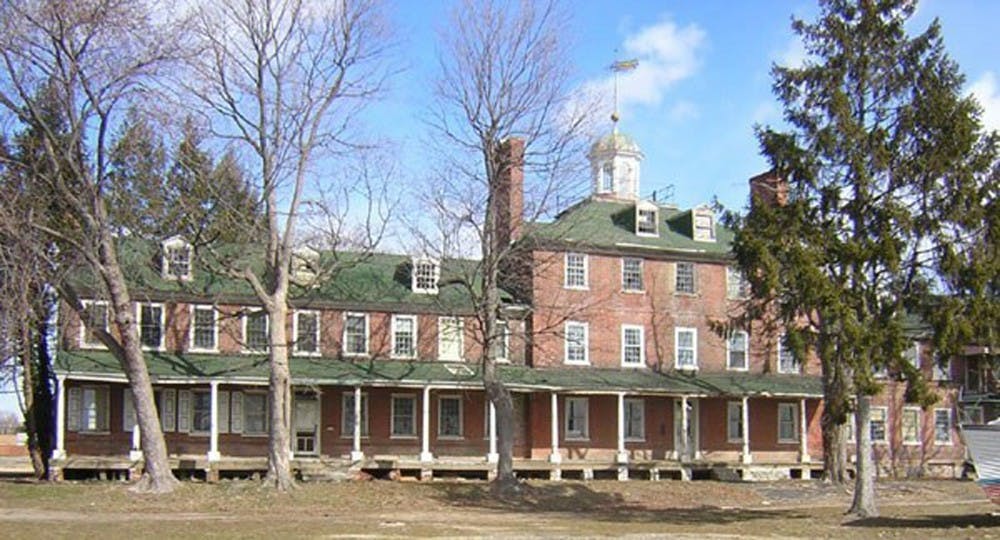“If you can ignore the planes flying overhead, it looks like you could be transported back in time,” said David Barnes, associate professor in the Department of History and Sociology of Science, describing his first visit to Lazaretto.
Established in 1799, Lazaretto, a little-known monument that lies on the banks of the Delaware River just outside Philadelphia, is the oldest quarantine station in the Western Hemisphere. It served as an inspection point for ships and cargo for immigrants over the years.
Despite Lazaretto’s somewhat rundown, rustic exterior, the building is a historical treasure trove — and a site of preservation for a course taught at Penn’s School of Design.
Over the past semester, historic preservationists Christina Carter and John Milner have been co-teaching a course called “Architectural Archeology.” As part of the course, they have been working with their students to study different aspects and preservation strategies for Lazaretto.
Carter, who is a principal at the firm John Milner Architects, said the course allows her students to study various architectural elements of Lazaretto.
“For this course each year, we look for a building that is not occupied, has an interesting history and is available for study,” she said.
Barnes, who called the site an “architectural gem,” explained that Lazaretto was the first port of entry for many Americans, and for this reason, is often called Philadelphia’s equivalent to Ellis Island.
However, Barnes, who is currently working on a book on the history of Lazaretto, believes the monument is “even rarer and more precious,” since it is a century older than Ellis Island. Before becoming a quarantine station, Lazaretto was part of a 1643 Swedish settlement, the first permanent European settlement in Pennsylvania.
Because of this deep history, the Lazaretto building was a perfect fit for this semester’s course.
“I hope the course will contribute to overall and background knowledge of the structure,” Carter said. “This should help guide any future restoration and renovation.”
Paul Steinke, the representative of Preservation Pennsylvania on the Lazaretto Preservation Association of Tinicum Township, said the PennDesign course will help provide historical context to the building as many continue with efforts to preserve it.
“We are hoping the course will provide more detail as to how the building has evolved,” he said. “ We hope it will fill up gaps in the narratives we currently have as to the building’s history.”
According to Steinke, who is also general manager of Reading Terminal Market, the building forms an important part of the city’s and the nation’s history. He said the current plan for the building is for it to serve as Tinicum Township’s headquarters, with a part of it being a police station. Sections of it will also be devoted to the building’s history.
The decision to maintain both a functional and historical use, he explained, was made with the realization that there has to be a “viable avenue to support its [Lazaretto’s] upkeep.”
Barnes said that Penn is trying to support Lazaretto in a “multifaceted” manner. Next semester, Barnes will be teaching a graduate workshop on public history, all of the assignments for which will be related to Lazaretto.
“These courses bring free labor to Lazaretto,” Barnes said, “and the students get an incredible learning experience.”



